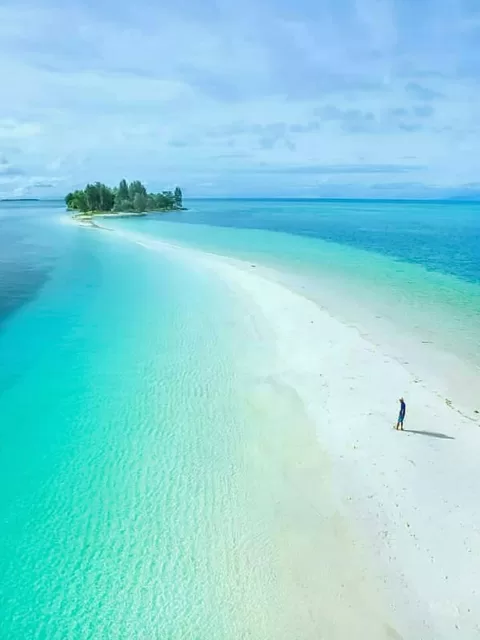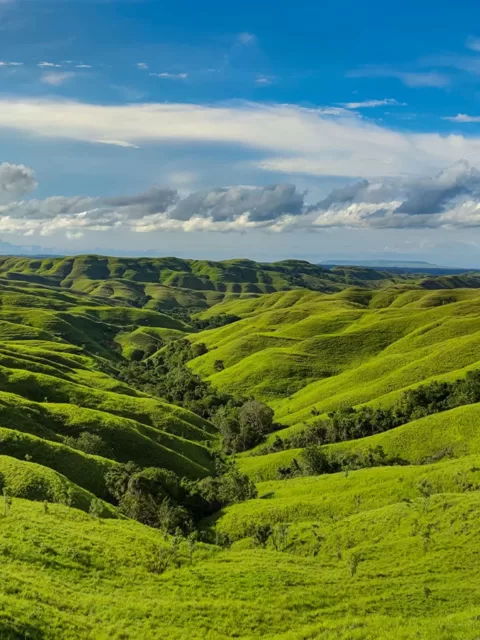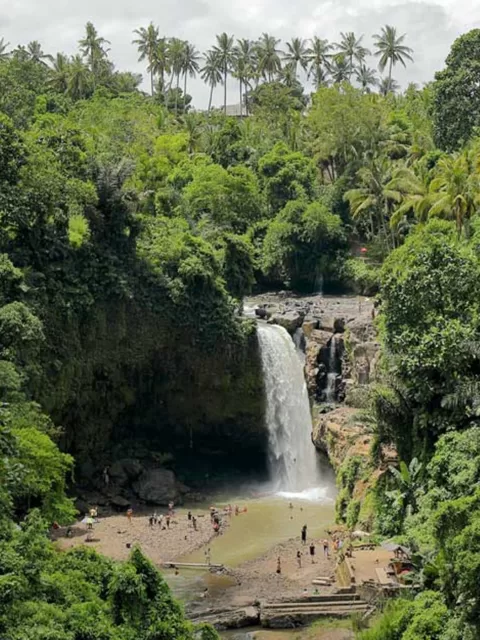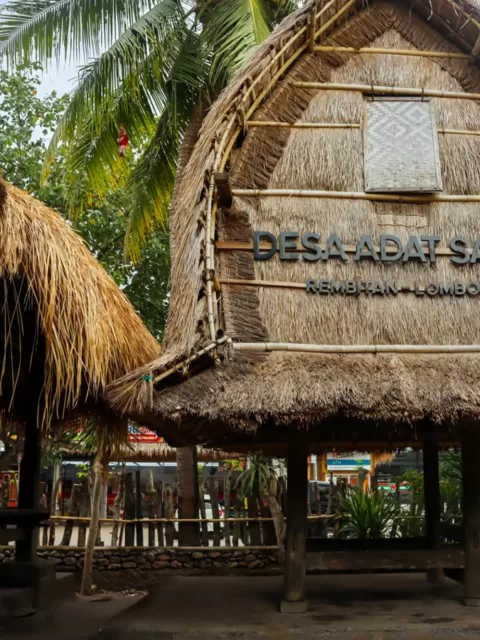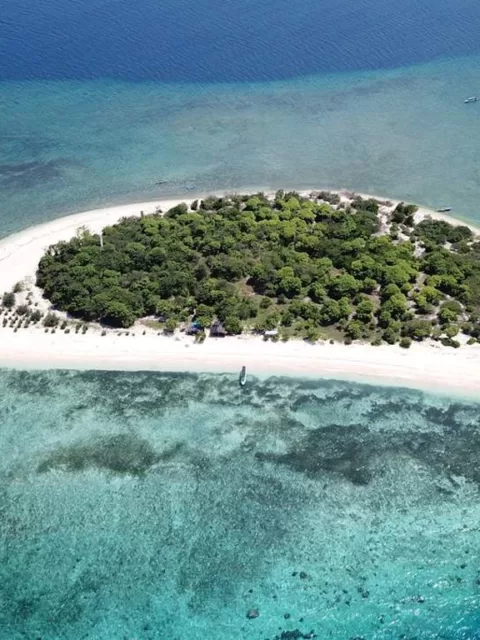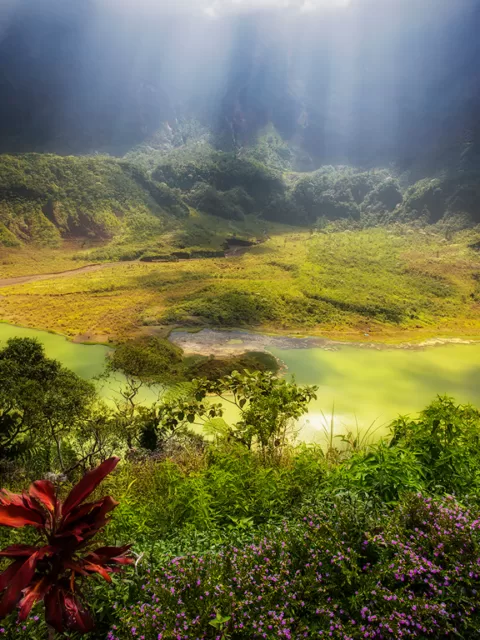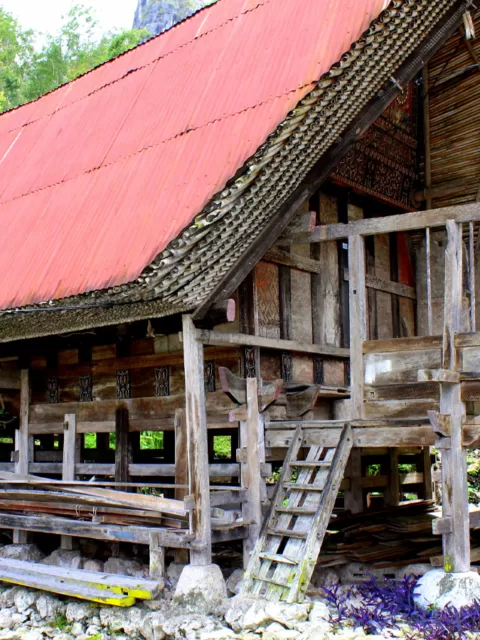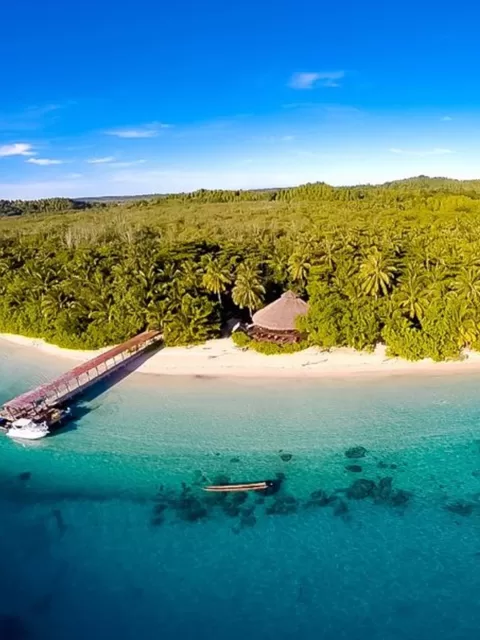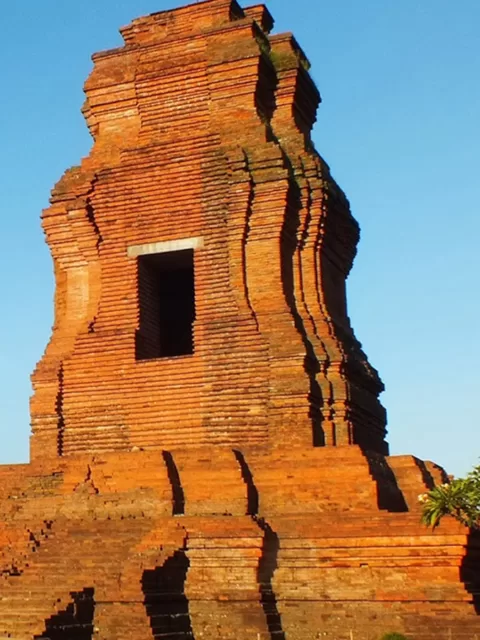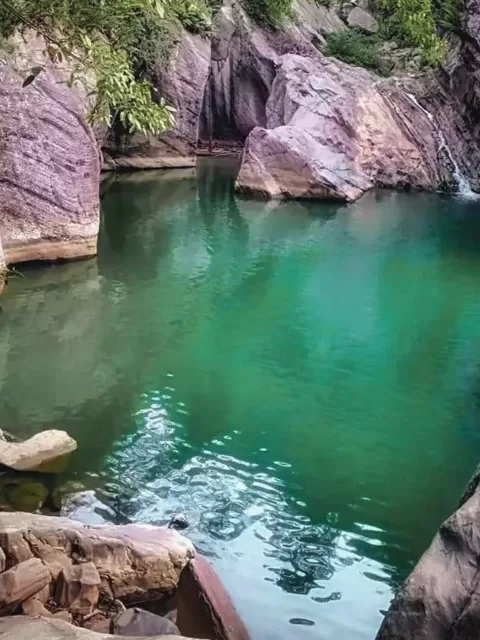Wae Rebo Village: Where Tradition Meets Tranquility
Introduction: A Sanctuary of Tradition and Tranquility
Nestled in the heart of Flores, Indonesia, Wae Rebo Village stands as a testament to the rich cultural heritage of the region. This remote village, surrounded by lush landscapes, offers a unique blend of tradition and tranquility that captivates the hearts of those seeking an authentic cultural experience. Wae Rebo Village is not just a destination; it’s a living testament to the resilience of indigenous traditions and the harmonious coexistence of its people with nature. As we embark on this journey, we delve into the significance of Wae Rebo as a cultural destination, setting the stage for an exploration of its historical roots and the enchanting architectural marvel that is Mbaru Niang.
Exploring Wae Rebo Village
Historical Background of Wae Rebo
The historical roots of Wae Rebo Village trace back to a visionary leader and the founding figure, Empu Maro, who laid the foundations of this unique settlement around a century ago. Empu Maro’s legacy is embedded in the very soil upon which Wae Rebo stands today, and his vision has transcended time, leaving an indelible mark on the village’s identity.
Empu Maro, the patriarch and founder of Wae Rebo, was a man of foresight and determination. Around a century ago, he led the Manggarai people in establishing this village in the verdant highlands of Flores. His decision to create a community in this specific location was likely influenced by factors such as the fertile land, strategic positioning, and perhaps a spiritual connection to the surrounding natural elements. As the founder, Empu Maro played a pivotal role in shaping the architectural and cultural landscape of Wae Rebo, setting the stage for what would become a haven of tradition and tranquility.

Today, the legacy of Empu Maro endures through the veins of Wae Rebo’s inhabitants, who proudly identify as his 18th-generation descendants. The village stands as a testament to the vision and wisdom of its founding father, as well as the resilience and continuity of Manggarai culture. The stories of Empu Maro are woven into the fabric of Wae Rebo’s oral tradition, creating a living connection between the past and the present.
Empu Maro’s decision to establish Wae Rebo reflects more than just the physical creation of a village; it symbolizes the preservation of cultural heritage, the continuation of ancestral traditions, and the establishment of a harmonious community. His visionary leadership laid the groundwork for the iconic Mbaru Niang houses and the unique cultural practices that have become synonymous with Wae Rebo.
Exploring the historical background of Wae Rebo, anchored by the figure of Empu Maro, provides visitors with a profound understanding of the village’s genesis. It is an opportunity to grasp not only the architectural and geographical considerations but also the cultural and spiritual dimensions that have shaped Wae Rebo into the enchanting destination it is today. The story of Empu Maro is not just a chapter in the history of Wae Rebo; it is the foundation upon which the entire narrative unfolds, inviting travelers to step back in time and witness the enduring spirit of Manggarai heritage.
Architectural Marvel: Wae Rebo’s Mbaru Niang
The architectural marvel of Wae Rebo lies in its iconic Mbaru Niang, a collection of tall, conical houses that stand as a testament to the unique cultural and practical ingenuity of the Manggarai people. What sets Wae Rebo’s Mbaru Niang apart is not just their distinctive appearance but also the thoughtful design that reflects the cultural and communal values deeply embedded in the village’s way of life.
At the heart of Wae Rebo’s architectural uniqueness is the fact that the village comprises only seven main Mbaru Niang houses, each standing tall against the backdrop of the Flores highlands. This intentional scarcity adds to the sense of exclusivity and preserves the integrity of the village’s cultural heritage. The scarcity of these traditional houses also reflects the tight-knit community and the importance placed on preserving the traditional way of life.
The Mbaru Niang houses themselves are a five-tiered marvel, each level serving a specific purpose that harmonizes with the needs of the community. The first level, known as lutur or tent, is the extended family’s living quarters, fostering a sense of communal living. The second level, lobo or attic, is designated for the storage of food and goods, reflecting the practical considerations of daily life in the village. Moving up, the third level, lentar, is reserved for storing seeds, emphasizing the agricultural significance of the community. The fourth level, lempa rae, serves as a reserve for food stocks in case of drought, showcasing the villagers’ foresight in sustainable living. Finally, the fifth level, hekang kode, is the most sacred space in the house, dedicated to placing offerings for the ancestors—a poignant reminder of the spiritual connection that permeates every aspect of Manggarai life.

Upon arriving in Wae Rebo, visitors are greeted by this architectural wonder, but an important cultural protocol adds an extra layer of significance to the encounter. Out of respect for the villagers and their traditions, visitors are not allowed to take photos until they have been greeted by the village elder in one of the Mbaru Niang houses. This respectful approach ensures that the cultural exchange is prioritized over the documentation of the experience.
As a symbol of gratitude and support for the community, visitors have the opportunity to make a donation to the village elder. This donation not only contributes to the village’s sustainability but also fosters a sense of reciprocity between guests and hosts. In return, visitors are treated to the famous Wae Rebo robusta coffee, a welcoming gesture that not only satisfies the taste buds but also symbolizes the warmth and hospitality that define the essence of Wae Rebo Village. The Mbaru Niang houses, with their unique design and cultural significance, stand as living embodiments of the delicate balance between tradition and practicality, offering a glimpse into the rich tapestry of Manggarai life.
Cultural Traditions in Wae Rebo
Penti Ceremony: Indigenous Rituals and Ceremonies
The Penti ceremony, held annually by the Wae Rebo people, is a captivating display of indigenous rituals and traditions that reflect their deep-rooted connection to the land, their ancestors, and their spiritual beliefs. This sacred event is not merely a celebration of the harvest; it is a profound expression of gratitude, a plea for blessings, and a reaffirmation of community bonds.
A Celebration of Abundance and Gratitude
As the first rays of dawn illuminate the misty mountains, the villagers gather at the springs, the symbolic source of life. Here, they offer prayers of thanksgiving to the divine spirits for the bountiful harvest that has sustained their community throughout the year. The abundance of the harvest is not taken for granted; it is perceived as a gift, a blessing bestowed by the benevolent forces that govern their world.
A Plea for Prosperity and Unity
The ceremony then moves to the village’s front porch, a place of significant communal importance. Here, prayers are specifically directed towards women whose husbands reside outside the village. These women, known as “perantauan,” face unique challenges in maintaining their connections to their ancestral home and their families. The Penti ceremony provides an opportunity for them to reaffirm their place in the community, seeking blessings for their well-being and their distant loved ones.

The final stage of the ceremony unfolds in the village’s backyard, a space that symbolizes the heart of the community. Here, the villagers unite in prayers for prosperity and health, encompassing not just individuals but the entire village as a collective entity. The well-being of the land and its people is inextricably linked, and the Penti ceremony serves as a powerful reminder of this interconnectedness.
A Sacrificial Offering for Guidance and Fertility
At the height of the ceremony, two pigs are sacrificed, their blood collected and offered to the high priest. Through the intricate ritual of interpreting the blood’s patterns, the priest seeks guidance from the spirits, seeking insights into the future prospects for the village. The blood, imbued with symbolic significance, is also believed to possess the power to enhance fertility, ensuring the continued abundance of the land.
A Thrilling Caci Fight: A Symbol of Enduring Traditions
The Penti ceremony culminates in a thrilling Caci fight, a traditional ritual that has been practiced by the Wae Rebo people for generations. This mock battle, performed between two men armed with rattan whips, serves as a symbolic representation of strength, resilience, and the enduring spirit of the community. The villagers believe that the shedding of blood during the Caci fight will bring fertility to the land, ensuring a bountiful harvest in the year ahead.

The Penti ceremony, with its blend of spiritual rituals, communal prayers, and symbolic acts, stands as a testament to the Wae Rebo people’s deep connection to their ancestral traditions and their harmonious coexistence with the natural world. It is a celebration of life, a plea for blessings, and a reaffirmation of the bonds that unite a community in shared values and unwavering faith.
Traditional Arts and Crafts
The artistic expressions of Wae Rebo extend far beyond its ceremonies, encompassing a vibrant array of local crafts. From intricately woven textiles to hand-carved wooden artifacts, the village’s artisans skillfully preserve their cultural identity through their craft. Engaging with these traditional arts not only offers visitors unique souvenirs but also fosters a deeper understanding of the cultural narratives woven into each creation. As the hands of skilled artisans bring these traditions to life, visitors become integral participants in the ongoing narrative of Wae Rebo’s cultural heritage.

Connecting with the Locals
Homestay Experiences in Wae Rebo Village
For travelers seeking an immersive cultural experience, Wae Rebo offers the opportunity to engage in homestay experiences with local families. Staying in traditional houses, visitors gain firsthand insight into the daily lives of the Manggarai people. The benefits extend beyond accommodation; they include shared meals, storytelling sessions, and a genuine exchange of cultural perspectives. These homestays not only provide economic support to the community but also foster meaningful connections between visitors and locals, creating a bridge between different worlds.
Participating in Community Activities
Beyond the confines of accommodation, Wae Rebo welcomes visitors to actively participate in the daily life and routines of the village. Whether assisting with agricultural activities, learning traditional crafts, or joining in communal celebrations, travelers have the chance to be more than spectators—they become contributors to the vitality of Wae Rebo. These hands-on experiences forge lasting memories and leave an indelible mark on the hearts of those fortunate enough to engage in the rhythm of village life.
Tranquil Surroundings of Wae Rebo
Natural Beauty of the Surrounding Landscape
Wae Rebo is not just a cultural haven but also a paradise for nature enthusiasts. Surrounded by rolling hills and dense forests, the village offers breathtaking views that beckon exploration. Hiking trails crisscross the landscape, leading adventurers to hidden waterfalls, panoramic viewpoints, and secluded corners of natural beauty. The symbiotic relationship between the village and its surroundings creates an immersive experience where the tranquility of nature complements the cultural richness of Wae Rebo.
Sustainability and Eco-Tourism Initiatives
As the global call for sustainable tourism grows louder, Wae Rebo stands as a beacon of eco-friendly practices. The community actively engages in conservation efforts to preserve the pristine beauty of their surroundings. Initiatives include reforestation projects, waste management programs, and a commitment to responsible tourism. Visitors are encouraged to embrace these principles, ensuring that their presence contributes positively to the preservation of Wae Rebo’s unique ecosystem.
Practical Tips for Visitors
How to Get to Wae Rebo Village
While the journey to Wae Rebo may involve some logistical considerations, the effort is richly rewarded. Travelers can reach the village through a combination of land and trekking routes, with Labuan Bajo serving as a common starting point. Local guides familiar with the terrain ensure a safe and memorable journey. The transportation options vary, from traditional boats crossing scenic lakes to picturesque hikes through lush landscapes. Understanding the available routes enhances the overall travel experience, setting the stage for the cultural immersion that awaits.
Recommended Length of Stay and Best Times to Visit
To fully absorb the essence of Wae Rebo, it’s advisable to plan a stay of at least three to four days. This duration allows for a comprehensive exploration of the village, participation in community activities, and ample time for moments of serenity amidst nature. The best times to visit are during the dry season, from April to December when the weather is conducive to both cultural engagement and outdoor adventures. Planning the visit around local festivals provides an extra layer of cultural enrichment, offering a glimpse into the vibrancy of Manggarai traditions.
Final Thoughts
In conclusion, Wae Rebo Village emerges as a jewel in the crown of cultural tourism. Its seamless integration of tradition and tranquility creates an immersive experience that transcends the boundaries of ordinary travel. From the historical roots that anchor the village to the architectural marvel of Mbaru Niang, from the vibrant tapestry of rituals to the serene landscapes that cradle Wae Rebo, each element contributes to a destination that is as enriching as it is awe-inspiring. As we bid farewell to this cultural gem, let us carry with us not just memories of a journey but a profound appreciation for the harmonious coexistence of tradition and tranquility that defines Wae Rebo Village. May future travelers be inspired to explore and appreciate the magic woven into the fabric of this Indonesian cultural haven.
Wae Rebo Village - A Tranquil Haven of Tradition
Wae Rebo Village is a hidden gem located in the highlands of Flores Island, Indonesia. This secluded village is home to the Toraja people, who have preserved their unique culture and traditions for centuries.
Pros
- A one-of-a-kind cultural immersion experience
- Breathtaking natural beauty and a tranquil atmosphere
- Warm and welcoming local people
- Unique Architectural Heritage
Cons
- Remote location and challenging accessibility
- Limited accommodation options within the village
- Potential discomfort for some due to lack of modern amenities



